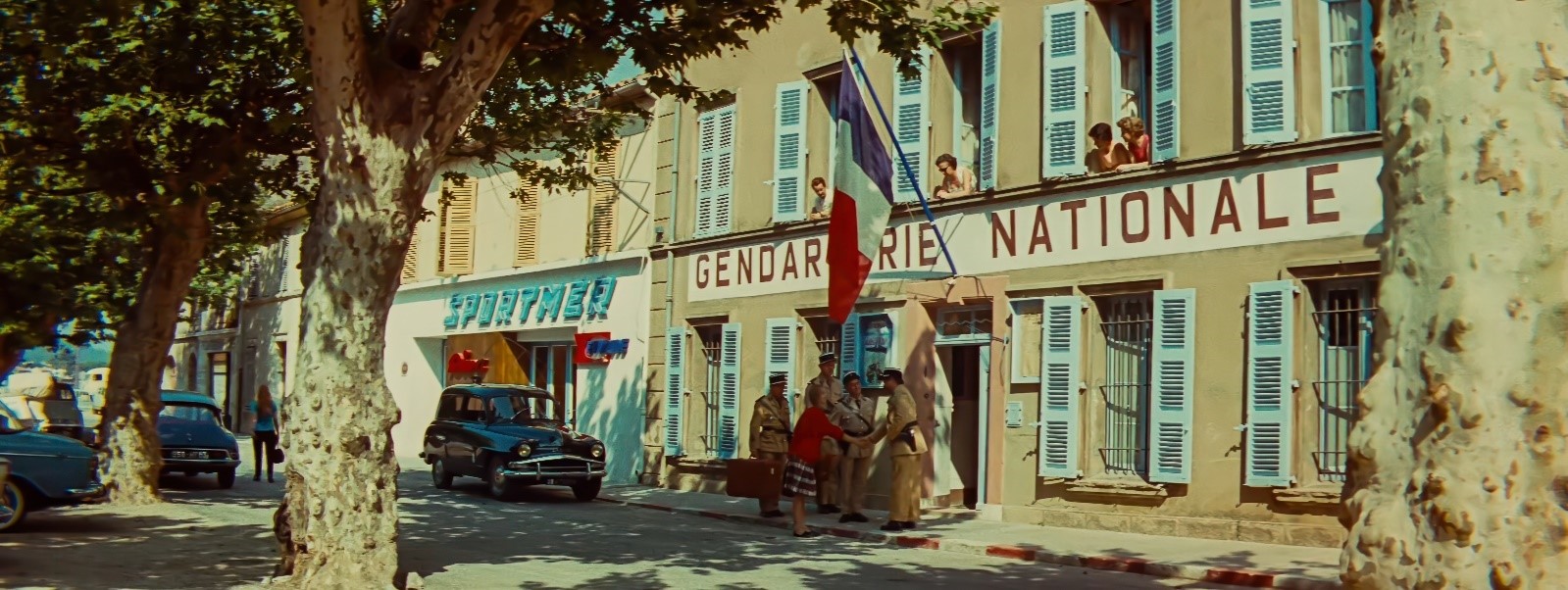English translation of the exhibition « 60 ans du Gendarme de Saint-Tropez, garde à vous ! »
Enjoy your visit !
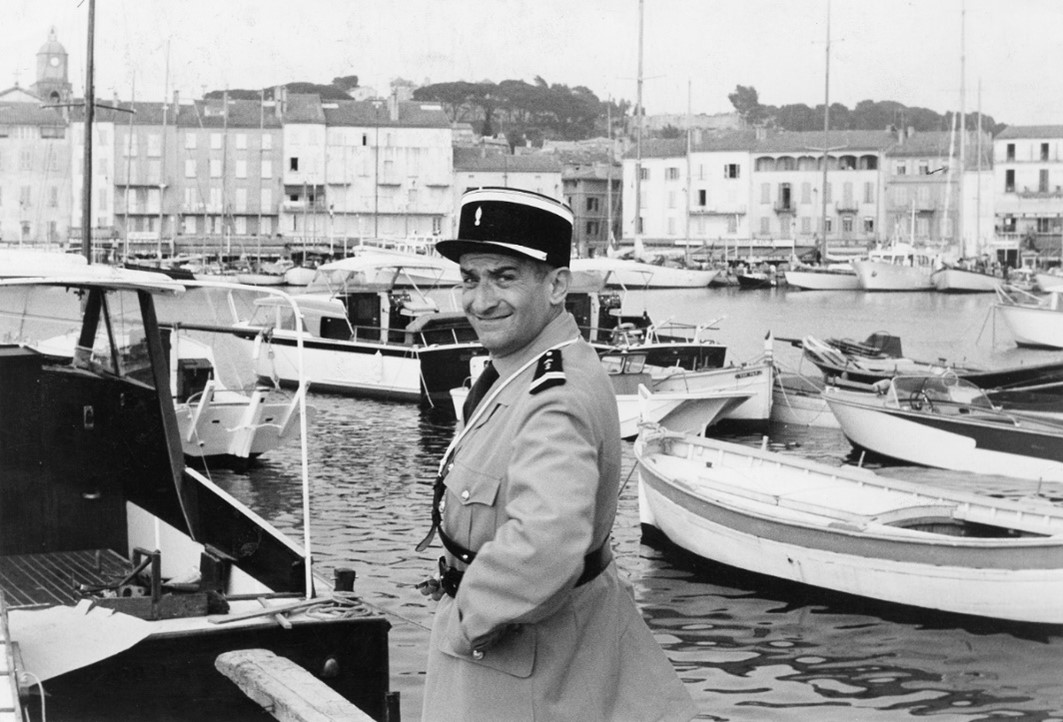
« I wasn't looking for success, I was aiming at doing well.»
AN UNPRETENTIOUS COMEDY
Conceived as a brief, unpretentious comedy, this first instalment of The troops of Saint-Tropez was the reflection of a Gaullist, patriarchal and prudish society faced with a new generation ready to shake up the old system.
After reading the script, the SNC producers were sceptical about the success of the film, for which they had allotted a budget of 1.3 million francs (less than €200,000). Their instructions were to spend very little, and to hire minor actors so as not to have to pay them too much. And yet, with 7.8 million tickets sold, the film ranked third at the box-office of the time, after La Grande Vadrouille (1966) and The sucker (1965). The adventures of this Gendarme who gesticulates, rants, lies and loves have brought together generations in many countries! Louis de Funès is gret in such role. The film respected good morals and was in keeping with Louis de Funès’ vision of comedy: a gentle humour that would appeal to young and old alike. This six-episode saga, filmed between 1964 and 1983, tells the story of how society has changed, from the days of young yé-yé artists to the arrival of digital technology!
8 years after ‘And God created woman’, ‘The troops of St. Tropez’ marks the rise in popularity of Saint Tropez on the big screen in a family comedy. Exported to some thirty countries, it is one of the most popular French sagas and still holds a huge place in the hearts of the publc.
"I found my character thanks to her", said Louis de Funès about his mother. “I love making people laugh !”
Once upon a time… 110 years ago !
2024 marks the 110th anniversary of the birth of Louis de Funès.
It all began just like in a romantic novel, when the beautiful girl eloped with her Prince Charming!
Carlos Luis de Funès de Galarza, a solicitor from Madrid and Leonor Soto Reguera eloped because her family wouldn’t allow them to marry. She finally got round her father’s refusal and married Carlos in 1904. The couple moved to Paris in France. Their first child, Maria, nicknamed Mimi, was born in 1907, followed three years later by Charles, and on 31st July 1914, Louis was born in Courbevoie!
Carlos could not pursue his career as a lawyer in France. He started up several businesses, including diamond trading, but was scammed and lost all his money. Leonor made a living selling furs. These were hard times for the de Funès family. In the 1920s, Carlos disappeared; his wife found him in Venezuela years later and brought him back to Paris, very ill. He died in Spain in 1934.
Louis did not like school and found it boring. His childhood and teen years were marked by his desire to make his friends laugh. At a very young age, his mother made him learn to play the piano. He did not know music theory, but he had a sense of rhythm, a musical ear, and a very good memory, all of which enabled him to master a wide repertoire of music.
He had his first stage success at the age of 12 and was praised by a local newspaper.
His dream was to become an actor. He admired the silent film heroes Buster Keaton, Laurel and Hardy and, of course, Charlie Chaplin. All his life he dreamed of making a silent film!
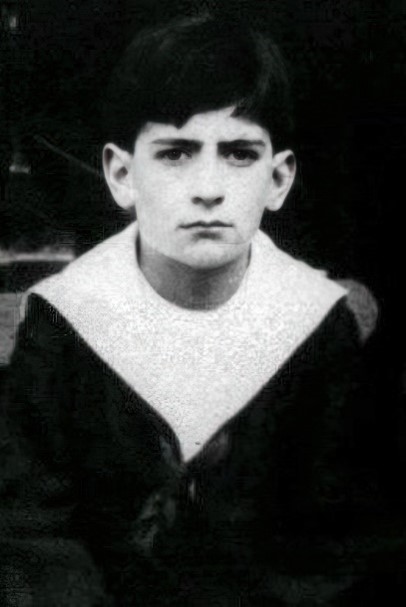
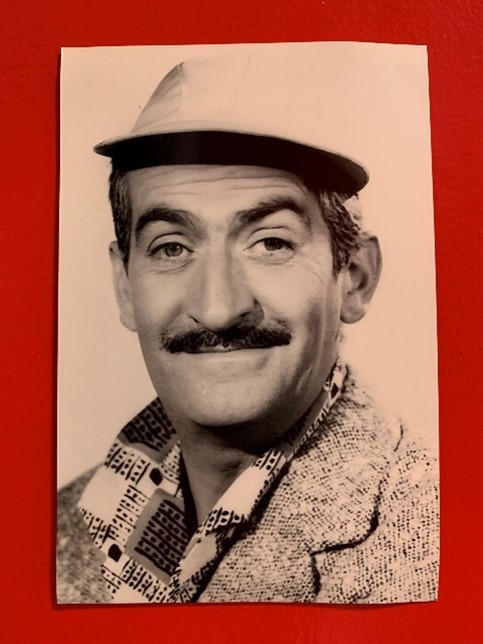
« I don't regret having a late success... I've acquired quite a comic background without which I couldn't have had such a career. Like an overcoat, like a suit, roles have to be tailor-made for me »
De Funès, the phenomenon
At 28, he entered the Cours Simon (a prestigious French drama school), where he met Daniel Gélin, who was to become a true friend, supporting him through dire straits. The school’s discipline was too harsh for him, and he quit to attend a jazz music school. There he met Jeanne, his second wife. He invited her to listen to his concerts at L’Horizon, a nightclub where he would play every night.
At his keyboard, he performed the hits of the moment with another self-taught musician, Edouard Ruault, who would be known as Eddy Barclay.
He worked tirelessly, taking on a series of roles in various plays. Then he landed his first role in the cinema with Jean Stelli’s ‘The temptation of Barbizon’ in 1946. He is strong and brave and his determination ends up giving good results.
First in his stage work, where he was already catching the audience’s attention with his improvisation. His success was confirmed in the early 60s, with the lead role in Claude Magnier’s Oscar, made into a film in 1967.
He joined the ‘Trupe des Branquignols’ created by Robert Dérhy and Colette Brosset. For almost 2 years, he was the star of a theatrical revue, La grosse Valse, in which he played a customs officer at an airport. He met several « future Gendarmes » such as Guy Grosso and Michel Modo.
In the cinema he played a series of « great supporting roles ». In 1954, he played a police constable in ‘The pirates of the bois de Boulogne’, partly filmed in Saint-Tropez.
In 1956, in Claude Autant-Lara’s La Traversée de Paris, he stole the show from Bourvil and Jean Gabin for one scene in the role of Jambier, the grocer.
Louis de Funès is unstoppable on a film set, he has a sense of rhythm and always finds the right timing for a gag. His credo was to denounce the abuse of power through cowardly, tyrannical characters that he made both detestable and endearing!
The most popular comic actor of the 60s had to reach the age of 50 to gain recognition for his talent.
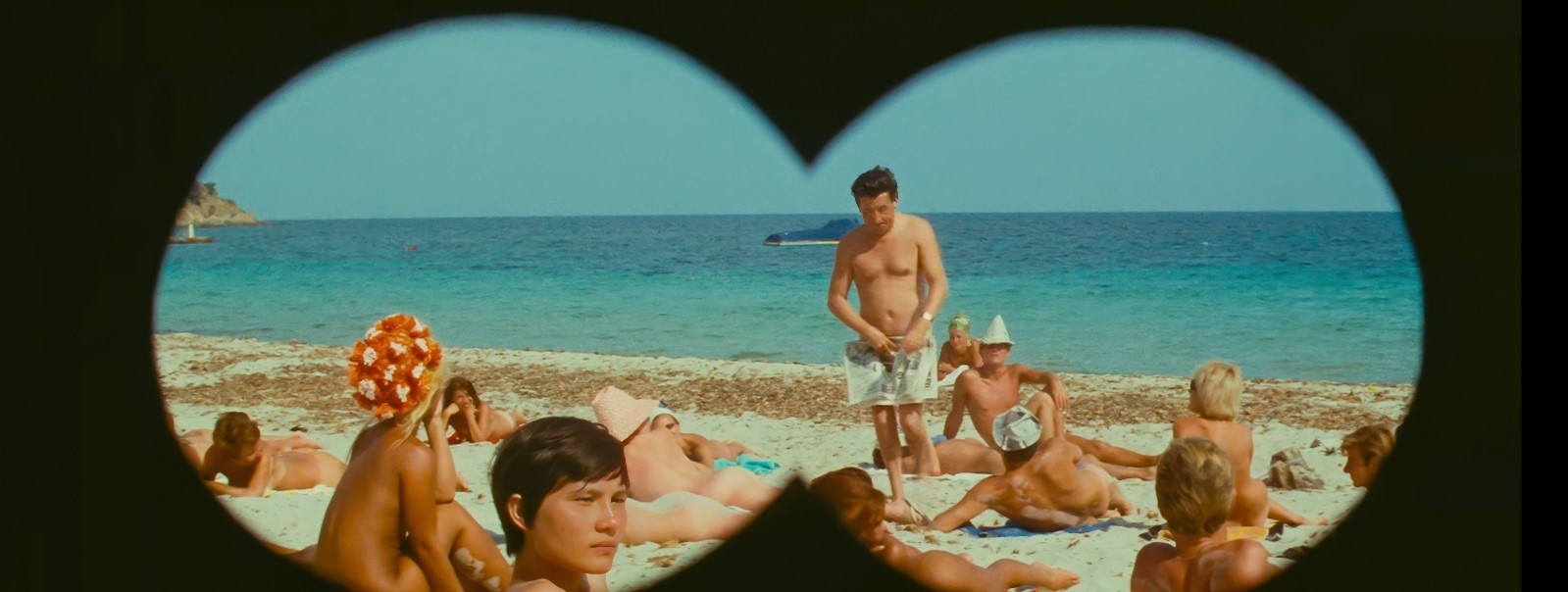
« The gendarme is for the country what the sheepdog is for the herd. You often have to bark, sometimes bite, but always be feared! »
Richard Balducci was visiting the Gulf of Saint-Tropez when his camera was stolen. He went to the Gendarmerie in Saint-Tropez to report the theft at midday…! He was met by a kindly-looking Gendarme who listened to his story and then told him that they had almost arrested the thief the day before! He told this funny story to Jean Girault, who, with Jacques Vilfrid, decided to write a script about the life of a brigade in Saint-Tropez!
After Francis Blanche and Dary Cowl had turned him down, Jean Girault suggested to producer Gérard Beytout that Louis de Funès should play the part.
While on holiday in Saint-Tropez, Michel Galabru recalls a conversation he overheard at La Ponche: « So for the lead role you’re giving me Louis de Funès and the rest of the cast will be a bunch of losers because I don’t want to pay much for them! » A few days later he learned that he had been cast.
With the help of Jean Girault, Louis de Funès surrounded himself with actors he liked and with whom he could express his creativity. He came up with the idea for the role of Chief Warrant Officer Gerber to highlight the hierarchical relationship with his character. He suggested that Michel Galabru should play this Gendarme, who was at once good-natured and bossy. The two actors had a mutual respect for each other. For 18 years, the pair worked in perfect harmony, like Laurel and Hardy!
And there was colour…
Shooting began on 20th May 1964 and the film was released on 9th September 1964.
The film’s prologue begins with 6 minutes of black and white. On the advice of the cinematographer, who feared that the weather in Belvédère (Vallée de la Vésubies – Alpes-Maritimes) would be cloudy, Jean Girault decided to shoot in black and white, leaving colour to break through during the credits and the arrival in Saint-Tropez!
The choice of colour was a novelty at the time, and a luxury!
When the film was broadcast on French television, some channels asked that a card be inserted to explain that the film was in colour.
« The gendarme is order and order is always unpopular. That's it! Attention!»
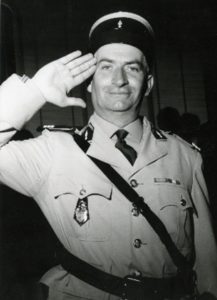
PLOT
A gendarme working in a Provençal village is promoted to Maréchal des Logis chef in Saint-Tropez.
He leaves his brigade accompanied by his daughter, the charming Nicole, and arrives at the port of Saint-Tropez by bus. The zealous little Gendarme immediately puts his two overly friendly subordinates in order and issues a dozen fines between the port and the Gendarmerie.
He proudly displays his fines to his superior, Chief Warrant Officer Gerber, in front of whom he shows himself submissive and obsequious after having been rather vigorous with his subordinates. The tone is set! He is determined to put an end to compromises and privileges and get back to the basics of his job.
The brigade is overwhelmed by the phenomenon of nudists who have been mocking the gendarmes for too long. But Cruchot is determined to put an end to these abuses. He uses all the means at his disposal: military training, camouflage and infiltration.
The task becomes more complicated when the first conflicts with his young daughter arise. In Saint-Tropez, Nicole discovers a life of partying, carefree fun and luxury alongside a gang of young yéyé-style holidaymakers, whom she wants to impress by pretending to be the daughter of a billionaire.
She becomes entangled in the theft of a Rembrandt, which alarms the entire Gendarmerie. Overwhelmed by her lies, she is forced to implicate her father. Cruchot, an attentive father concerned about his daughter’s honour, does his best to solve the case without arousing the suspicions of his superiors.
A COMEDY GENIUS
« You can’t say no to Louis’ ideas. With a stroke of genius, he can transform an ordinary scene into the highlight of the film. ». Jean Girault
37-YEAR CAREER – 140 FILMS
The sixties were an extraordinary period for the actor on the big screen.
1960
Three billion people on the planet (7.8 billion today)
Introduction of the new franc
Johnny Hallyday makes his stage début
1961
First orbital flight by a man in space, Yuri Gagarin
Construction of the Berlin Wall
1962
Creation of the « Salut les copains » magazine
Opening of the first supermarket in France
1963
President John F. Kennedy is assassinated in Dallas
Claude François (Cloclo) makes his first television appearance
1964
Louis de Funès tops the box-office charts
1965
Married French women are allowed to work without their husband’s permission and to open a bank account in their own name.
Courrèges launches the miniskirt.
1966
Téléavia: the first portable television set is launched
1967
Launch of colour television in France
Introduction of the credit card
Louis is received at the Elysée by General de Gaulle
He buys the Château de Clermont, near Nantes
1968
Four weeks’ paid holiday.
The events of May 68 reflected the aspirations of young people and their desire to shake up the traditional system and advocate access to social mobility for all.
1969
Concorde’s first (non-commercial) flight
Neil Armstrong becomes the first man to walk on the Moon
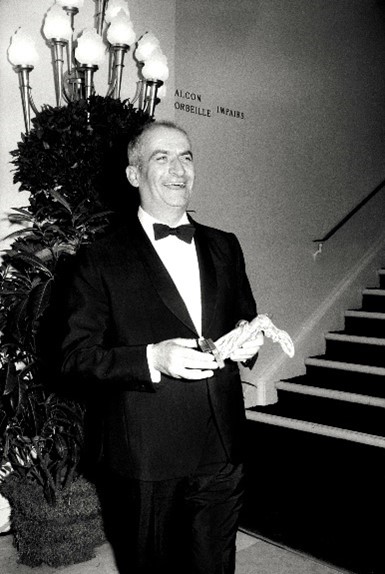
"I'm getting too serious, I need to get back to the fun stuff". Memorable, funny hits - 1970 to 1982
Some recognition…
When compared with other artists of his time and the number of films he made, Louis de Funès did not receive many awards.
At the 20th Nuit du Cinéma held at the Théâtre Marigny in late October 1965, Gina Lollobrigida presented him with a Victoire du Cinéma award for his role inThe troops of Saint-Tropez.
On 1 July 1970, when he was filming Le Gendarme to stroll, he was officially received by the 405th anti-aircraft artillery regiment in Hyères, which appointed him « first class of honour » for services rendered to the Gendarmerie nationale.
On 15 March 1973, he was made a Knight of the National Order of the Legion of Honour.
In early 1980, he received an honorary César for his entire career, handed over by Jerry Lewis.

On 27 January 1983, Louis’ heart stopped.
Saint-Tropez Gendarmerie
What would « The troops of Saint-Tropez » be without its beautiful Gendarmerie barracks. The building has been home to the gendarmes since 1879, but they left in 2003. The town first leased the building to a private individual, Raymond Ladouceur, before buying it back in 1934. The building was designed to accommodate the families of the gendarmes.
The filming of The troops of Saint-Tropez began in the spring of 1964, while the building was occupied by the gendarmes, making it necessary to shoot the interior scenes at the Victorine studios in Nice.
In 2003, after the departure of the brigade, the building was abandoned, but fans continued to come and take photos of the famous façade. In 2012, the town council decided to create a museum and chose the subject on which it would be focused:
– The history of the Gendarmerie corps and the building,
– Myth and reality in Saint-Tropez and the cinema.
In June 2016, the museum opened its doors to the public in a completely refurbished building, of which only the façade has been preserved.
8 years later, the museum has welcomed a million visitors!
The yéyé generation
Despite seeming like a shy young girl, Nicole quickly adapts to life in SaintTropez and easily becomes part of a group of young holidaymakers. She learns the dress code, acquires the vibrant attitude and becomes the leader of the little gang!
« DOULIOU-DOULIOU Saint-Tropez… »
Through this depiction of youth, the filmmaker presents the generation of baby boomers born just after the war. He portrays the carefree spirit of the time, in a context of economic development and renewal in every field: music, fashion, morals, mass consumption, culture…
The epitome of this youthful consumerism and excitement was the radio programme « Salut les copains », created in 1959 on Europe 1, followed by the eponymous magazine published in 1962.
In 1963, a free concert was organised in Paris to celebrate the first anniversary of the magazine, and Johnny Hallyday and Sylvie Vartan came to crown the event, which was attended by over 150,000 teenagers.
A few days later, in a review published in Le Monde, a sociologist dubbed this generation the « yéyés », in reference to the word « yeah » for Yes, which punctuates their idols’ hits.
A legendary soundtrack
Raymond Lefèvre composed the soundtrack for the Gendarme saga. He was asked by Jean Girault to compose an original melody to match the trends of the time and the rhythm of the film.
He composed the Douliou-Douliou Saint-Tropez twist, performed by Geneviève Grad, and in August 1964 he composed the emblematic music for the « March of the Gendarmes » parade, which was included in every episode. It was jokingly inspired by the music of The Bridge on the River Kwai. In a tempo akin to an American march, the rhythm of the refrain sung by male choirs and led by drums created a catchy tune easy to remember.
A beautiful American in Saint-Tropez
The first cinema appearance of this legendary American car was in a popular French film!
Jean Girault, the director of The troops of Saint-Tropez, was looking for a convertible car to use in his film. An original model that would appeal to young people and express their enthusiasm and dreams. Henri Chemin, a friend of Gérard Beytout (the film’s producer) was Director of Public Relations and Racing at Ford France. At the time, he had one of the first Mustang convertibles to come to Europe. Its involvement in so many scenes makes it almost a supporting actor!
The Mustang has appeared more than 3,000 times on the big and small screens over the last 60 years.
This car continues to fascinate people of all ages and generations, with the passion and nostalgia of the Sixties and the French ‘Glorious Thirty Years’ (1945 – 1975),
The Mustang’s second cinema appearance was in the 1965 British film Goldfinger.
FESTIVAL DE CANNES 1964
During the filming of the movie, the Mustang made an appearance at the Cannes Film Festival. It was one of the official cars carrying the stars of the time: Michèle Mercier, Geneviève Page, Anouk Aimée and Jayne Mansfield.
To mark its first anniversary on 17 April 1965, Ford workers hoisted a white Mustang convertible to the 86th floor of the Empire State Building in New York, putting the car in kit form in the lift and reassembling it on the panoramic terrace.
For the 50th anniversary, a yellow Mustang convertible was once again displayed on the skyscraper’s terrace, marking the birth of the sixth generation of the legendary pony car.
THE FORD MUSTANG
A symbol, an icon, a legend and an unrivalled success.
France’s most popular American car was presented to the public on 17 April 1964. It was conceived by Ford in the early 60s to meet the expectations of Americans who dreamed of a car with a sporty, stylish design, at an affordable price and aimed at young, female consumers.
For a long time, it was thought that designer John Najjar had named the Mustang after the P-51 Mustang World War II fighter plane. But Lee Iacocca, Ford’s Managing Director and creator of the Pony-car project, argues that the name simply comes from wild ponies. The metaphor of the tough, robust, agile and fast pony gave rise to the Mustang logo.
It reached 418812 sales in its first year !
The popularity of this car exceeded FORD’s expectations! The initial purchase price was $2,368 for the basic version, which at the time was almost the same as that of the Beetle! Ford recorded 22,000 orders on the first day on the market.
Sales were spectacular! Particularly in 1966, the best year ever, when the annual production record reached 607,568 units. On 23 February 1966, the millionth car rolled off the production line, proving the model to be one of the biggest success ever in the history of American industry!
Today, it is the best-selling sports car in the world!
The seventh generation…
The Mustang has evolved over the years, with 7 distinct generations of models.
The 7th generation of the Ford Mustang arrived 60 years after the start of its legend. True to its DNA, it boasts striking new styling, clean lines and a new cockpit-like cabin, featuring the latest technology.


What happened to the Ford Mustang used in the film?
After the filming of ‘Le Gendarme de Saint-Tropez’, the red Mustang remained in France. To this day, it is still in perfect conditions, having undergone no renovations nor alterations. The bodywork still bears the bumps and scratches made during the filming, and on the inside of the passenger side door, there is a handle specially installed for Genevieve Grad to hold on to during the action scenes.
Today it belongs to Patrick Serpagli, who founded the Mustang Club de France in 1984 with other fans. As a fond collector, he has given nicknames to his cars, which are carefully preserved in the « Mustang Atelier ». The Troops of Saint Tropez’s car was nicknamed « the dwarf » because everything about this pre-production Mustang is smaller. Aged 60 years, this red convertible is one of the oldest Mustangs in the world still on the road!

